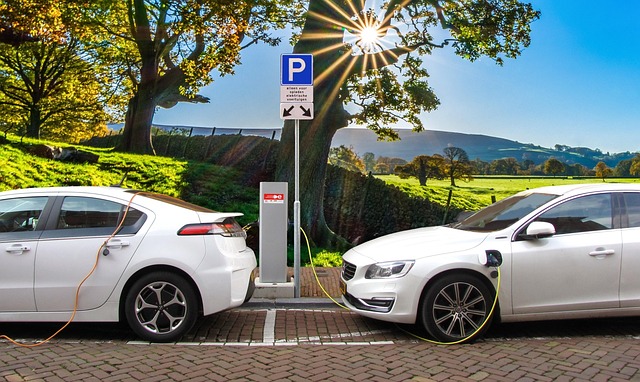Register Car California: VIN Verification & Online Application
Learn how to register your car in California with our step-by-step guide. Before you begin, understand the state’s specific requirements for car registration, including necessary documents for VIN (Ve…….

Learn how to register your car in California with our step-by-step guide. Before you begin, understand the state’s specific requirements for car registration, including necessary documents for VIN (Vehicle Identification Number) verification. After gathering all required documents, perform a VIN check to ensure your vehicle’s authenticity. You can then apply for registration and title online or in person, pay associated fees, and pick up your custom plates. Streamline the process with our expert tips on vin verification.
- Understand California Car Registration Requirements
- Gather Necessary Documents for VIN Verification
- Perform Vehicle Identification Number (VIN) Check
- Apply for Registration and Title Online or In-Person
- Pay Car Registration Fees and Pick Up Your Plates
Understand California Car Registration Requirements

Before registering your car in California, it’s crucial to understand the state’s specific requirements. One key aspect is ensuring accurate and up-to-date vehicle identification number (VIN) verification. California requires a comprehensive VIN inspection to validate the vehicle’s history, ownership, and compliance with safety standards. This process helps prevent the registration of stolen vehicles or those with outstanding liens or repairs needed.
A legitimate VIN inspection can be conducted through various methods, including traditional stationary inspections at DMV offices or, for added convenience, mobile vin verification services. These mobile options offer a more accessible way to complete the necessary paperwork and verifications right from your location, making the car registration process smoother and potentially saving you time.
Gather Necessary Documents for VIN Verification

Before you begin the registration process, ensure you have all the required documents for VIN (Vehicle Identification Number) verification. This step is crucial as it confirms the vehicle’s authenticity and history, which is essential for California car registration. Gather the following: your vehicle’s registration certificate from the previous state, proof of insurance, a completed California Vehicle Registration Application form, and perhaps most importantly, a valid and accurate VIN inspection report.
For a hassle-free process, consider utilizing services like mobile vin inspection or a mobile vin verifier. These professionals can conduct the VIN verification at your convenience, saving you time and potential headaches down the line. This is especially beneficial if you’re new to California or unsure about navigating local regulations.
Perform Vehicle Identification Number (VIN) Check

Before registering your car in California, it’s crucial to perform a Vehicle Identification Number (VIN) check. This step ensures that your vehicle is legitimate and has not been reported stolen or had its identity altered. You can verify the VIN by using online tools provided by the California Department of Motor Vehicles (DMV) or through a mobile vin verification service.
A mobile vin inspection or vin verification service offers convenience by allowing you to complete this process from anywhere. These services utilize specialized equipment and databases to cross-reference the vehicle’s information, providing instant results that can be used to support your registration application. This is particularly beneficial if you’ve recently purchased a used car, as it ensures you’re making an informed decision.
Apply for Registration and Title Online or In-Person

You have two options for registering your car in California: online or in-person. Both methods require preparing essential documents and information, but applying digitally offers a more convenient experience. The California Department of Motor Vehicles (DMV) allows you to submit the necessary forms through their website, including the Application for Registration and Title (Form DV140). Before starting, ensure your Vehicle Identification Number (VIN) is accurate through a vin verification process. This step is crucial for identifying your vehicle uniquely and can be done online or with a mobile vin verifier.
For an in-person visit, you’ll need to head to a local DMV field office with the required paperwork. Despite this being a less tech-friendly approach, it might be necessary if digital submission encounters issues. Either way, completing the registration process involves verifying your vehicle’s ownership, updating necessary details, and paying the applicable fees. Always double-check the accuracy of all information before submitting to avoid delays or complications in the future.
Pay Car Registration Fees and Pick Up Your Plates

After completing the registration application, it’s time to pay the car registration fees. These fees vary based on vehicle type and emission standards, so make sure to review the current rates before payment. You can typically pay online through the DMV website or in person at a local California DMV field office. Once your payment is processed, you’ll be issued unique license plates for your vehicle.
To ensure a smooth process, consider using a mobile vin verifier or undergoing a mobile vin inspection to verify your car’s history and identity before registration. This step helps prevent fraud and ensures you’re providing accurate information during the registration process. When picking up your plates, double-check that all details are correct, including your vehicle identification number (VIN), which is crucial for future reference and insurance purposes.
Registering a car in California involves understanding specific requirements, gathering essential documents for VIN verification, performing a Vehicle Identification Number (VIN) check, and submitting an application either online or in-person. Once approved, you’ll pay the necessary fees and obtain your vehicle’s registration plates. This process ensures your car complies with state regulations, facilitating smooth navigation through California’s roads. Remember to keep your documents updated for seamless future transactions and legal compliance.







